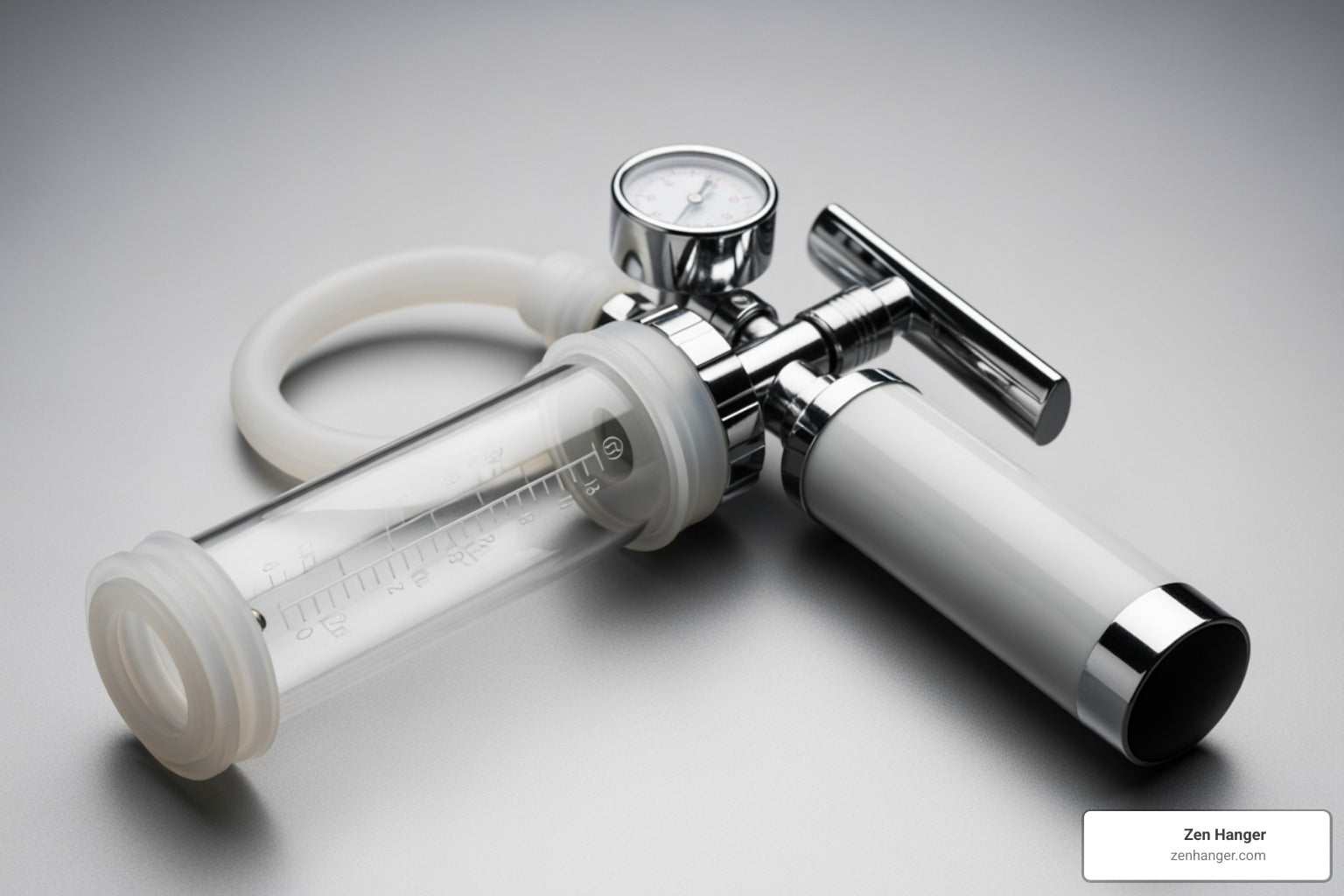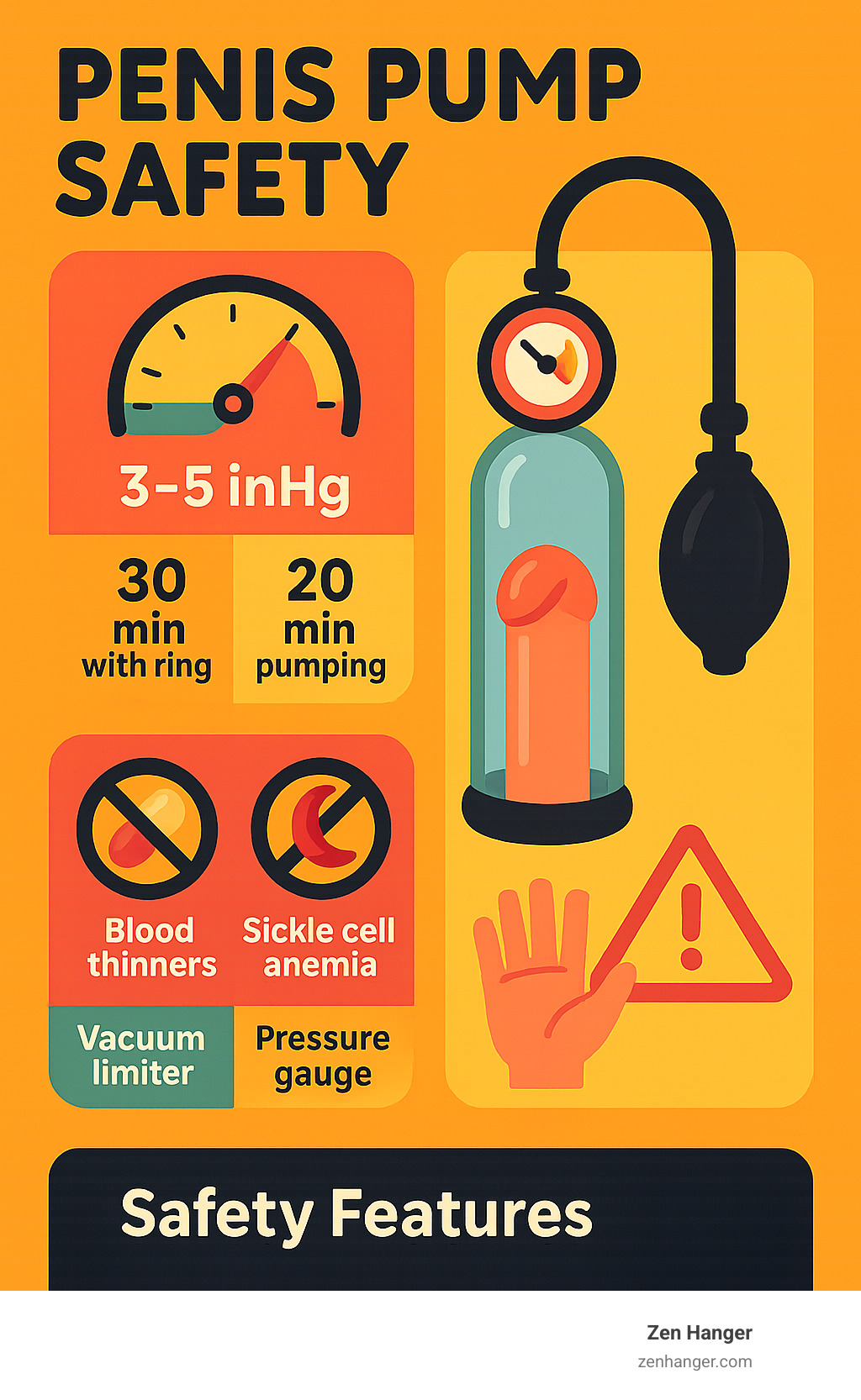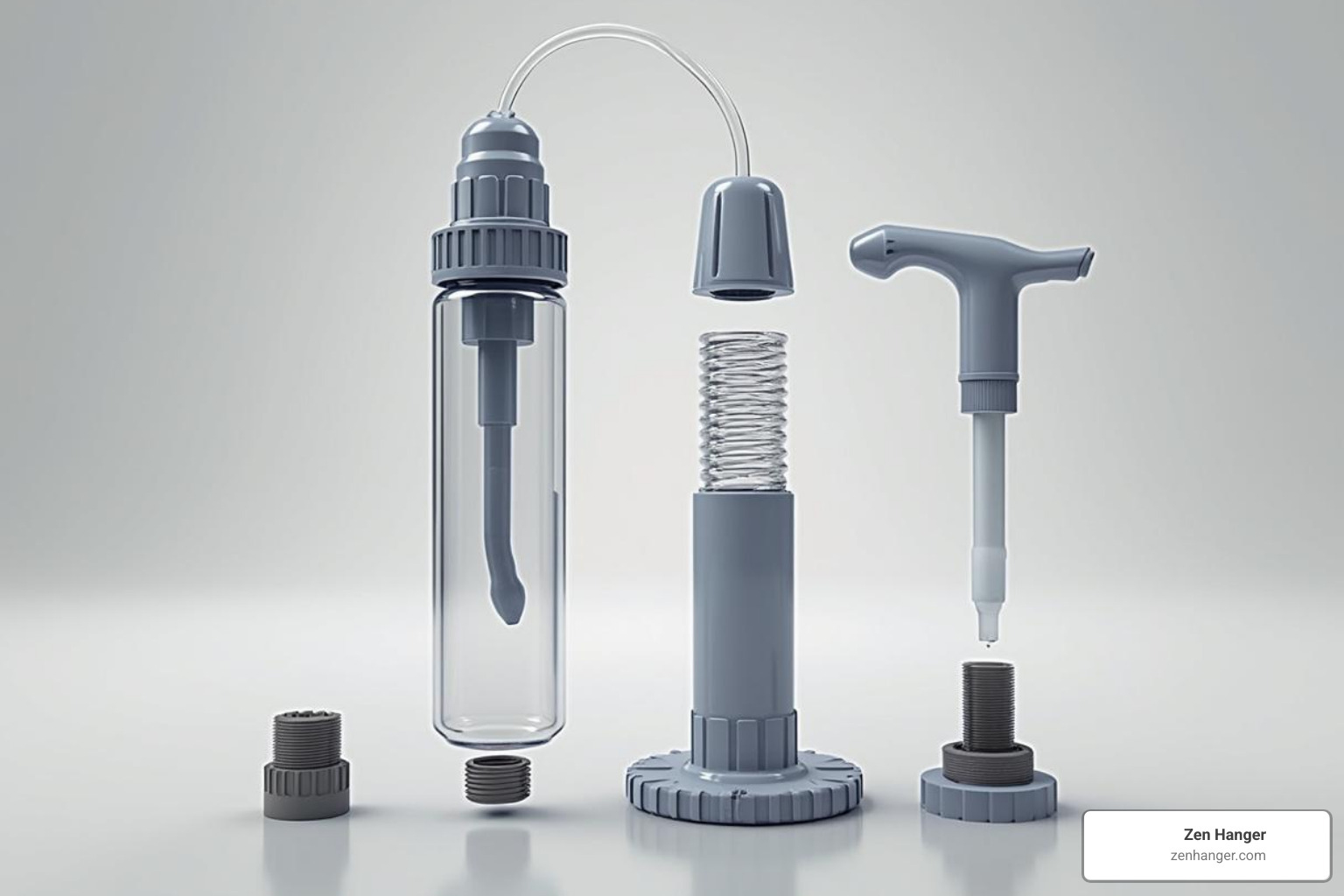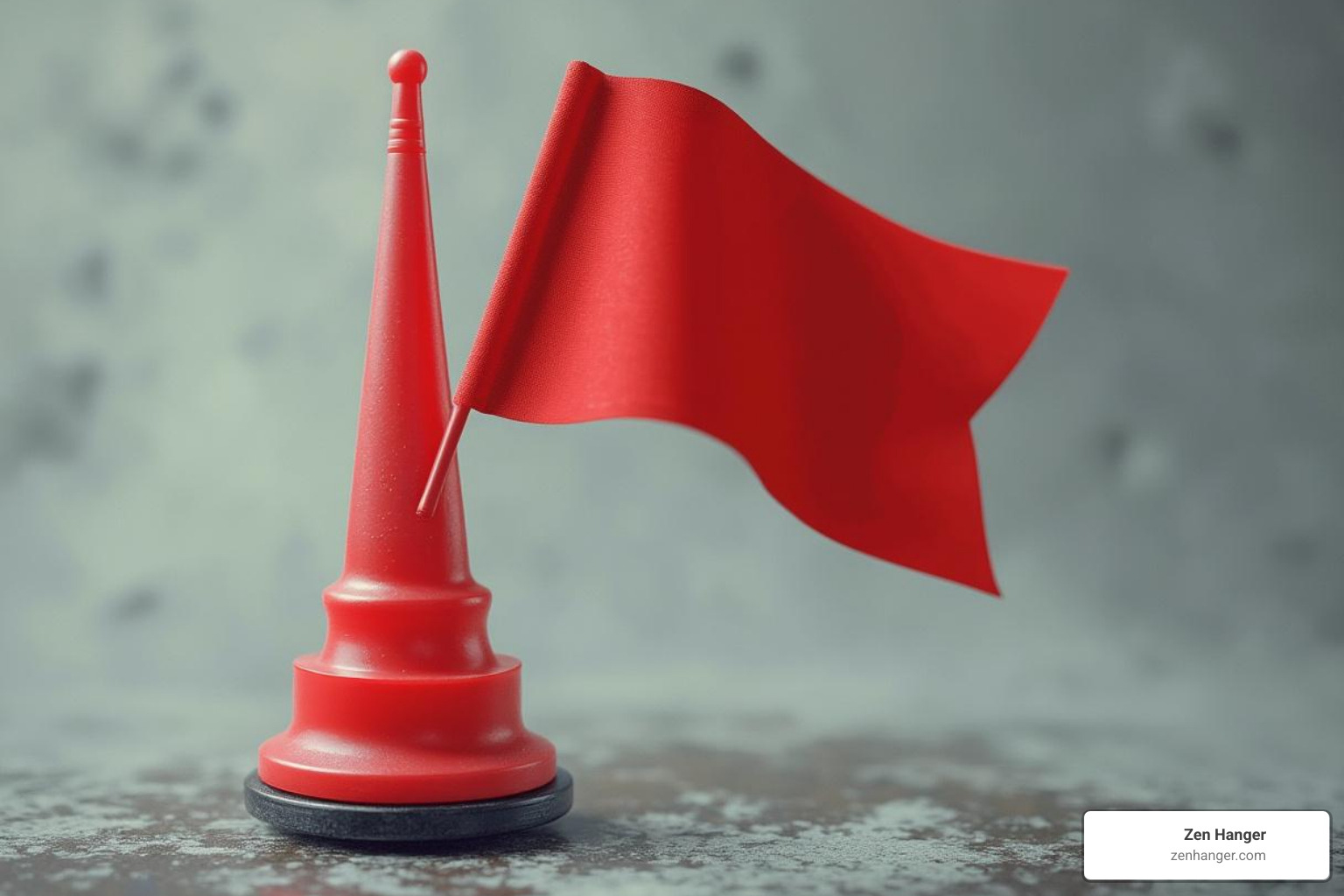
Don't Blow It – A Humorous Look at Penis Pump Safety
- Written
Why Penis Pump Safety Should Be Your Top Priority
Penis pump safety is crucial for anyone considering vacuum erection devices (VEDs) for erectile dysfunction (ED) or other penile health goals. These medical devices can help up to 90% of men with ED achieve an erection, but only when used correctly with proper safety precautions.
Key Safety Guidelines for Penis Pumps:
- Pressure limits: Never exceed 10 inHg. Beginners should stay between 3-5 inHg.
- Time limits: A pumping session should not exceed 20 minutes. A constriction ring should not be worn for more than 30 minutes.
- Medical clearance: Consult a doctor if you take blood thinners or have a blood disorder.
- Quality matters: Choose FDA-approved pumps with safety features like a vacuum limiter and pressure gauge.
- Listen to your body: Stop immediately if you experience pain, numbness, or skin changes.
Penis pumps work by creating a vacuum around the penis, drawing blood into the erectile tissues. While studies show up to 77% of users and their partners are satisfied with the results, improper use can lead to serious injuries, including burst blood vessels and tissue damage. Common side effects like temporary bruising or petechiae (small red dots) can be minimized by following safety protocols.
As John Hanger, President at ZenHanger, I've spent years advocating for safe male improvement practices. My experience has shown that education and proper equipment are the foundation of any successful and safe journey.

The Basics: What Are Penis Pumps and Are They Safe?
A penis pump, also known as a Vacuum Erection Device (VED), is a medical device that helps create an erection using vacuum pressure. It's a safe, non-surgical alternative for managing erectile dysfunction (ED) that has helped millions of men.

The process is simple: a cylinder is placed over the penis, and a pump creates a vacuum, drawing blood into the erectile tissues. This results in an erection, often in just a few minutes. A constriction ring is then slid to the base of the penis to maintain the erection. Studies show this method helps up to 90% of men with ED achieve a satisfactory erection, with 77% of users and their partners reporting satisfaction.
When used correctly, penis pumps are very safe. However, improper use can lead to temporary side effects like bruising, petechiae (small red dots from burst capillaries), or numbness. These are typically mild and can be avoided by following proper safety guidelines.
What Medical Conditions or Medications Make Use Unsafe?
While generally safe, penis pump safety requires consulting a healthcare provider, especially if you have certain conditions.
- Blood Disorders: Conditions like sickle cell anemia or leukemia can increase the risk of complications like priapism (a painful, prolonged erection) or blood clots.
- Blood-Thinning Medications: Drugs like warfarin (Coumadin) increase the risk of bruising and internal bleeding.
- History of Blood Clots: Anyone with a history of blood clots should use a pump only under medical supervision.
- Peyronie's Disease: While a 2019 study showed that pump use can improve curvature and function, it should be done under a doctor's guidance.
- Priapism Risk: If you have any condition that increases your risk of priapism, discuss it with your doctor before using a pump.
For more information, the Mayo Clinic provides a comprehensive overview of risks. We also have a specialized guide for those managing penis pumps and diabetes.
What Are the Risks of Using a Pump for Enlargement?
It is critical to understand that penis pumps are FDA-approved as medical devices for treating erectile dysfunction, not for permanent penis enlargement. Any size increase from pumping is temporary due to increased blood flow.
Attempting to achieve permanent gains by using excessive pressure or pumping for too long is dangerous and can lead to:
- Edema: Painful fluid buildup and swelling.
- Tissue Damage: Harm to the delicate erectile structures, which can worsen erectile function.
- Ruptured Blood Vessels: This can cause significant bruising and pain.
- Penile Fracture: In extreme cases, the tissue surrounding the erectile chambers can rupture, which is a medical emergency.
The key to penis pump safety is using the device as intended. For more on this, see our guide on penis pumps safe use and potential risks. For those interested in evidence-based approaches to male improvement, we've analyzed clinical studies on penis enlargement methods.
A Practical Guide to Penis Pump Safety
Proper technique is the foundation of penis pump safety. When used correctly, these devices are a highly effective, non-surgical option for managing ED, with satisfaction rates for users and their partners as high as 77%. They can be used alone, with ED medication, or as part of post-surgery rehabilitation to help restore natural function.

How Do I Use a Penis Pump? A Guide to Penis Pump Safety
Following these steps ensures both effectiveness and safety.
- Preparation: Trim any pubic hair at the base of your penis to ensure a good seal and prevent it from getting caught. Apply a generous amount of water-based lubricant to your penis and the rim of the cylinder.
- Pumping: Place the cylinder over your penis, pressing it against your body to create a seal. Begin pumping slowly and steadily. If you are a beginner, start with low pressure (3-5 inHg). Never exceed 10 inHg. If you feel any pain, release the pressure immediately. Limit pumping sessions to a maximum of 20 minutes.
- Using the Constriction Ring: Once you have a firm erection, slide the constriction ring from the cylinder onto the base of your penis. Release the vacuum and remove the cylinder. Crucially, do not leave the ring on for more than 30 minutes, as this can restrict blood flow and cause injury. Never fall asleep with the ring on.
- Cleaning: After each use, wash all parts of the pump with warm water and mild soap. Let it air dry completely before storing.
For a more detailed walkthrough, see our guide on How To Use Penis Pump Effectively.
What to Look For: Key Features for Penis Pump Safety
Not all pumps are created equal. Investing in a quality device with the right features is critical for penis pump safety.
- Vacuum Limiter: An essential feature that prevents pressure from reaching dangerous levels.
- Pressure Gauge: Allows you to monitor and control the vacuum level precisely, ensuring you stay within safe limits.
- Quick-Release Valve: Lets you instantly release the vacuum if you experience any discomfort.
- Medical-Grade Materials: Look for pumps made from body-safe materials like silicone and acrylic to avoid irritation.
- Appropriate Cylinder Size: The cylinder should be slightly larger and longer than your erect penis to ensure a proper fit and function.
When choosing between a manual and an electric pump, consider the following:
| Feature | Manual Pumps | Electric Pumps |
|---|---|---|
| Control | Precise, tactile control over pressure. | Automated, consistent pressure. |
| Power | No batteries or charging needed. | Requires batteries or charging. |
| Cost | Generally more affordable. | Typically more expensive. |
| Best For | Beginners and those who prefer fine-tuned control. | Users seeking convenience and hands-free operation. |
For more help, explore our How To Choose A Perfect Penis Pump Buying Guide and our article on Pump It Up Safely Penis Pumps Featuring Pressure Gauges.
Final Checks: When to Stop and Where to Go From Here

The most important rule of penis pump safety is to listen to your body. While these devices are safe when used correctly, recognize warning signs and know when to stop. Your long-term health and wellness should always be the top priority.
When Should I Stop Pumping and See a Doctor?
You should stop using the pump immediately if you experience any of the following:
- Pain or Discomfort: Pumping should not be painful. If it hurts, release the pressure.
- Numbness or Tingling: These sensations indicate that circulation may be overly restricted.
- Skin Discoloration: While mild redness is normal, significant bruising, blistering, or a bluish tint are signs of injury.
If any of these symptoms persist after you stop using the pump, it's time to consult a doctor. Seek immediate medical attention for any signs of serious injury, such as severe, lasting pain or a suspected penile fracture.
At Zen Hanger, we are committed to providing safe and effective tools for male improvement. Your journey should be one of confidence and well-being, not risk. By prioritizing penis pump safety, you can confidently explore the benefits these devices have to offer.
For more information on safe and effective methods, we invite you to explore our other resources.
Putting It All Together: Safety First, Confidence Always
By now you know the essentials: stay below 10 inHg, limit sessions to 20 minutes (ring on for ≤ 30 minutes), and choose a quality, FDA-regulated device with a gauge, limiter, and quick-release valve. Trim hair, use plenty of water-based lubricant, clean the pump after every use, and—most important—stop immediately if you feel pain, numbness, or notice unusual skin changes.
Follow these simple rules and a penis pump remains a reliable, non-surgical ally for erectile dysfunction, post-surgery rehabilitation, or situational performance support. Use the information in this guide, consult your physician when in doubt, and pump with confidence knowing that penis pump safety is firmly in your hands.
Need more guidance or equipment recommendations? Explore our full library of evidence-based resources and carefully engineered devices at Zen Hanger.
